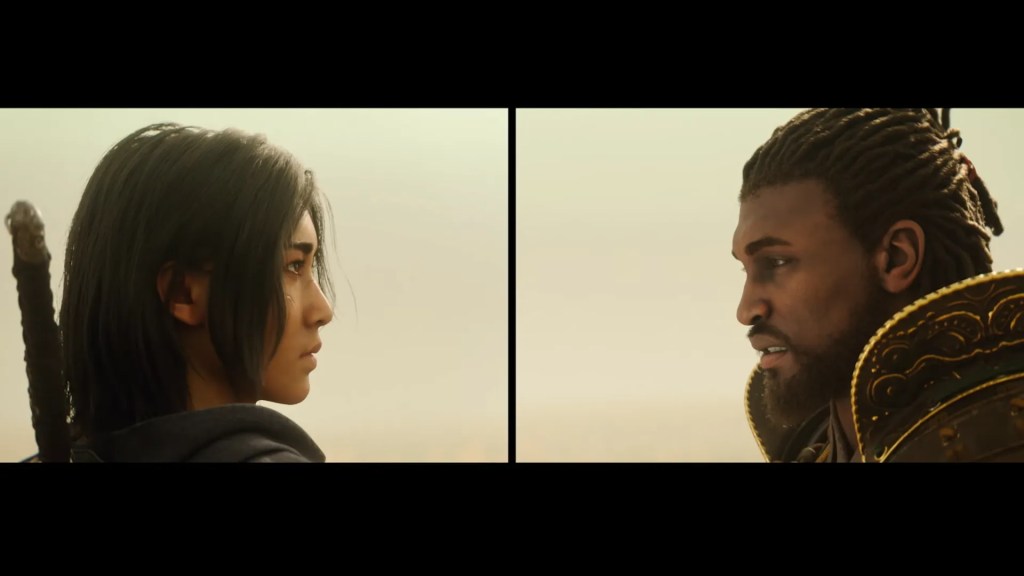Pathfinder: Wrath of the Righteous beings with a daunting boss fight, the kind that makes mere mortals tremble in their boots. I’m not talking about some hulking beast, although one does turn up quite quickly – I’m talking about bewildering and terrifying character creation system with its legions of numbers and arcane terms. By the time the game starts proper I already feel like I’ve had my head kicked in by some demonic foe. In the game’s defence it explains everything in detail, it’s just that to a Pathfinder noob like me those details might as well be written in Latin. While the visual customization is quite limited, there’s approximately 25 different classes, along with sub-classes. There’s tons of feats and skills and abilities to choose from. In short, this CRPG where you control a party of six has a lot going on and is probably only going to be for the kind of people who can invest dozens and dozens of hours into playing it.
The problem I faced is that with no context in terms of how the game would play or how any of these creation choices would work out I felt like my choices were being made blind. Now, ten hours in I’m still not convinced my messy character build is going to work out. Perhaps I should have gone for one of the premade character builds in order to become more familiar with how Wrath of the Righteous plays before restarting and rolling my own character.
Eventually I settled on something simple: a human Paladin, focused on being at the fore of every fight, soaking up the blows and occasionally healing allies. Adventurous, certainly not, but a solid choice for my first journey into the world of Pathfinder, a world I know nothing about. Having first been published in 2009, the Pathfinder RPG, which was based upon D&D’s third edition, has got a lot of built up lore. As for this videogame, it’s actually a follow-up to 2017’s Pathfinder: Kingmaker, so going in I wasn’t sure how lost I was going to be.
The answer is…very. To the game’s absolute credit, it gives you heaps of information and there are loads of names to hover the mouse over in dialogue to bring up extra windows packed with everything you need to know. And I certainly think you can muddle through the plot: you’re the Chosen One, demons turn up, wreck the city and now you need to save the world via some glowing sword you happened to stumble across underground. But you’re also going to have to handle a lot of dense vocabulary made of up names and places and events and characters. At times, it’s like trying to read a dictionary composed of an alphabet you recognise, but the words they make are entirely alien. Who is that? Why is that? What is that? Huh.
From here on, I might amble into small spoiler territory. Nothing serious, just the initial few hours of this massive game, but they are they. You have been warned.
Having fallen underground during that whole demon invasion thing, my first goal is to get back to the surface. It isn’t long before I’m teaming up with a helpful Paladin and stumbling across a few other survivors. Shortly after that, I’ve got myself some new friends in the form of Mongrels, a group living under the city for generations. Lann is half-lizard, with scales and horns adorning one side of his body, and his friend Wenduag appears to have giant spider legs sprouting out of her back. I can’t say I’m exactly comforted by this fact, and it isn’t long before Wenduag shows herself to be less of a paragon of virtue that Lann. For now, only one of these two are going to be joining me on my grand adventure. After I opt to side with Lann and display the mysterious Light of Heaven to the Mongrel chief, Wenduag vanishes. She turns up again later where it transpires she’s been siding with the demons and has taken part in some rather unsavoury rituals. Turns out the spider legs were a bit of a give away, really.
Naturally, I do eventually drag myself and my small band of misfits out of the underground and back up into a city swarming with demons. Along the way, I learn the harsh reality everything in Pathfinder is controlled by a roll of the dice. Skill checks, attacks, dodges, it’s all dictated by a virtual roll and that might be the part that has taken me the longest to get to grips with. I always struggle a bit with having control taken from me, and playing Pathfinder is a bit like XCOM where even the most easy looking attack can miss completely. It can lead to some hilariously stupid situations, though, like when I cast a grease spell at a gate, and watched as everyone passing through had to make a skill check save. What resulted was a pile of enemies and even allies all lying on the floor, looking like they were taking a nap mid-fight. It’s tough work being a cultist.
Mind you, it was a bit less funny when outside of combat one of my party ambled into a grease pull and then proceeded to make several dozen failed skill checks to get up. With no enemies around I wound up waiting for a few minutes until he managed to haul himself to his feet. Needless to say, I’ve become a bit more careful with how and where I magic up some grease.
In short, I’ve been loading a lot of saves because sometimes Lady Luck kicks me in the dick. My Paladin and Seelah have charged into fights only to be knocked out in 2 swift strikes. It can be a bitter pill to swallow, especially when that pill is made up of stats and die rolls that I’m trying to figure out. Pathfinder: Wrath of the Righteous is a complicated game, both a strength and a weakness.
Ah yes, my party. There’s Seelah, the former street urchin turned Paladin who is always cheerful; Lann, the half-lizard half-human looking goofball who has lived underground his entire life; Ember, the child-like Elf witch who was burned at the stake; Camellia, the noble lady has proven handy in fights but also appears to be hiding something sinister; Daeran. a nobleman who happily admits to getting pleasure from being an asshole; Nenio, whose gimmick is being a scientist and trying to break everything down into stats and figures. In total, there’s 15 recruitable companions, provided you count Finnean the talking weapon who I stumbled across in my adventures.
So far, they’re an interesting bunch. I can’t say I’ve seen much depth in them so far over the course of ten hours, but considering this is seemingly a 50+ title there’s still plenty of time to get to know them and embark on character specific quests and storylines. From what little I’ve gleaned, their personalities are well-defined and I’m already developing favourites. Lann, for example, mows down fools with his bow like a kid munches candy. Sneaky thief Woljif has proven pretty handy, too, and packs some good spells. I’m excited to see how my views on these people change, how my party composition switches as I build them up and try to find good roles for them.
I don’t know if I’m as excited about the combat, though. I love that you can swap between real-time or turn-based action, and recommend turn-based just so you can read the combat log on the side of the screen and use the data to get more comfortable with how everything works. Apart from that, though, I haven’t found the combat too compelling. The decisions I’m making in fights don’t feel difficult or tactically challenging. The complications come from what buffs to use and when, whether limited use spells and items should be deployed and so on. Those choices are interesting, but everything else falls a little flat at the moment.
Something I’m not convinced about is how the game is handling morality. At the start you’re asked to choose from a few different options, like Lawful Good, Chaotic Good, Evil and so on, although that doesn’t mean you can’t make decisions which go against these things sometimes. However, the options I’ve seen so far don’t really work in the context of the rest of the game. Most of the time, the option is just to kill people, which is certainly evil but it doesn’t fit with the story, nor make sense when you’re Paladin companion doesn’t immediately rip you to pieces. Using killing as the primary option for making “evil” choices feels like the most basic, barebones form of morality. The Mass Effect series did it far better, keeping its Renegade options believable in the overall universe. Sure, you could be a jerk, but it still always fit within the confines of the story and world. From what Pathfinder has shown me so far, its take on morality and choices is very, very simplistic.
I can’t help but feel I’m going to wind up writing a review for this one before I’ve even managed to finish the game. It’s that big. It’s that grand. At around ten hours in I’m only just hitting the first big battle, a huge event that made me shut off the game in irritation because it’s a long, gruelling fight with no chance to save. There are many more elements to be introduced, including some sort of bigger strategy element where you can command armies.
So, at this early stage, could I recommend Pathfinder: Wrath of the Righteous? Yeah, I probably would. It isn’t for everyone, though. This is a game for those willing to take their time, for those who like to soak up everything they can and relish the idea of an adventure that’s going to span dozens and dozens of hours across numerous quests. However, it does need to be noted that the Steam forums are reporting a lot of problems with the game, especially after act 3. Reports of save data vanishing, characters falling through the floor and becoming unusuable, abilities not working correctly, memory leaks and more all tarnish my own early recommendation. I can’t speak about these issues more, though, because I haven’t ran into anything major yet, and it could take me another week or two to get into act 3 and beyond. So, for now, be wary and do your research before splashing the cash.







